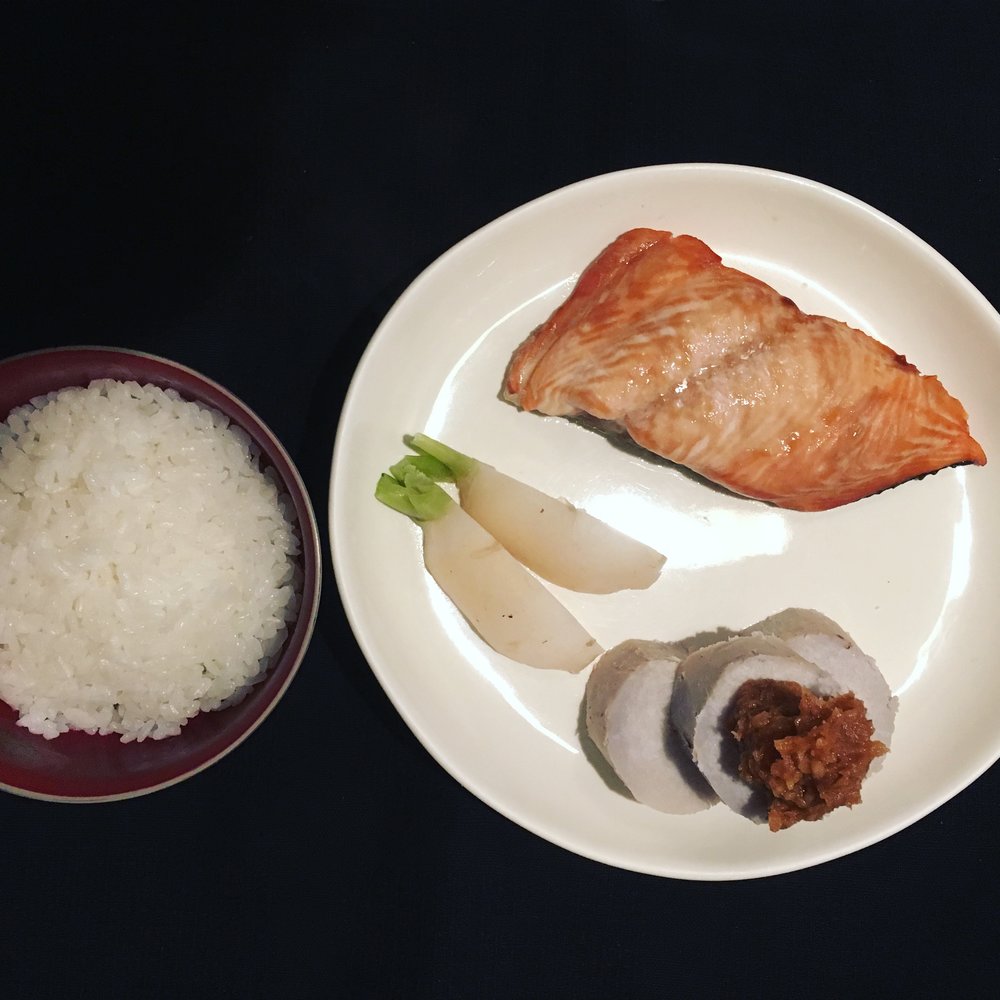
It’s been a year now I’ve started some barter process with our neighbors in the country. Some gingko nuts here, some citrus fruits, some plums, some bread etc… in exchange one would sew a kimono, teach me how to make umeboshi, give us a few pickled vegetables, and more often they would give us fresh vegetables from their gardens. Last weekend we’ve found on our door step a bag full of turnips, sato imo and a very strange vegetable that looked like a root that has grown and that I have never seen before. Since a few weeks ago I gave gingko nuts to several people, I couldn’t identify where the veggies came from and ask directly what was this strange vegetable. I couldn’t find it either in any cooking book. So I decided to use my resourceful Instagram friends to help me in that task and in less than 5min I had an answer that confirmed my guess. It was a sort of sato imo, but instead of the round gingle bell like, it’s a specie called bamboo shoot imo (takenoko imo – たけのこ芋) because of its bamboo shoot shape.
I cooked it in dashi with the skin (washed), together with turnips and peeled the root once boiled. The skin peels very easily. I seeved it with barley miso and grilled salmon from Iwate, and a bowl of plain rice. I really like the creamy texture of sato imo and this takenoko imo was really delicious. For the miso I hesitated between white miso and barley miso, but I found that the granulous texture of the barley miso a much better fit with the takeneko imo, and I was not disappointed. Fresh simple ingredients soeak for themselves, that’s it!















